At one of the corners of Whitaker St. and W. 37th St. in Savannah stands the Isetta Inn, where we stayed three nights.
I didn’t take careful notes when I read a framed article hung on a stairway landing at the Isetta, and I can’t find it posted on line, but I do remember it said that the property was built in 1907, suffered a period of neglect much later in the 20th century (of course) and might have been torn down, but it was restored to magnificence by a dedicated renovationist in the early 21st century. Now it’s a one-of-a-kind hotel.
Its fate could have been like the lot cater-cornered across the intersection. Wonder what used to be there.
I had time to mull that question, which I don’t really need to answer, sitting in one of the red rocking chairs on the Isetta’s delightful front porch. I spent some time there, both during the day and in the evening, reading or just gazing out into the surrounding neighborhood, the Starland District. Both 37th and Whitaker are fairly busy streets, and that stretch of 37th especially is a boulevard shaded by tall southern live oaks fully decked out with Spanish moss.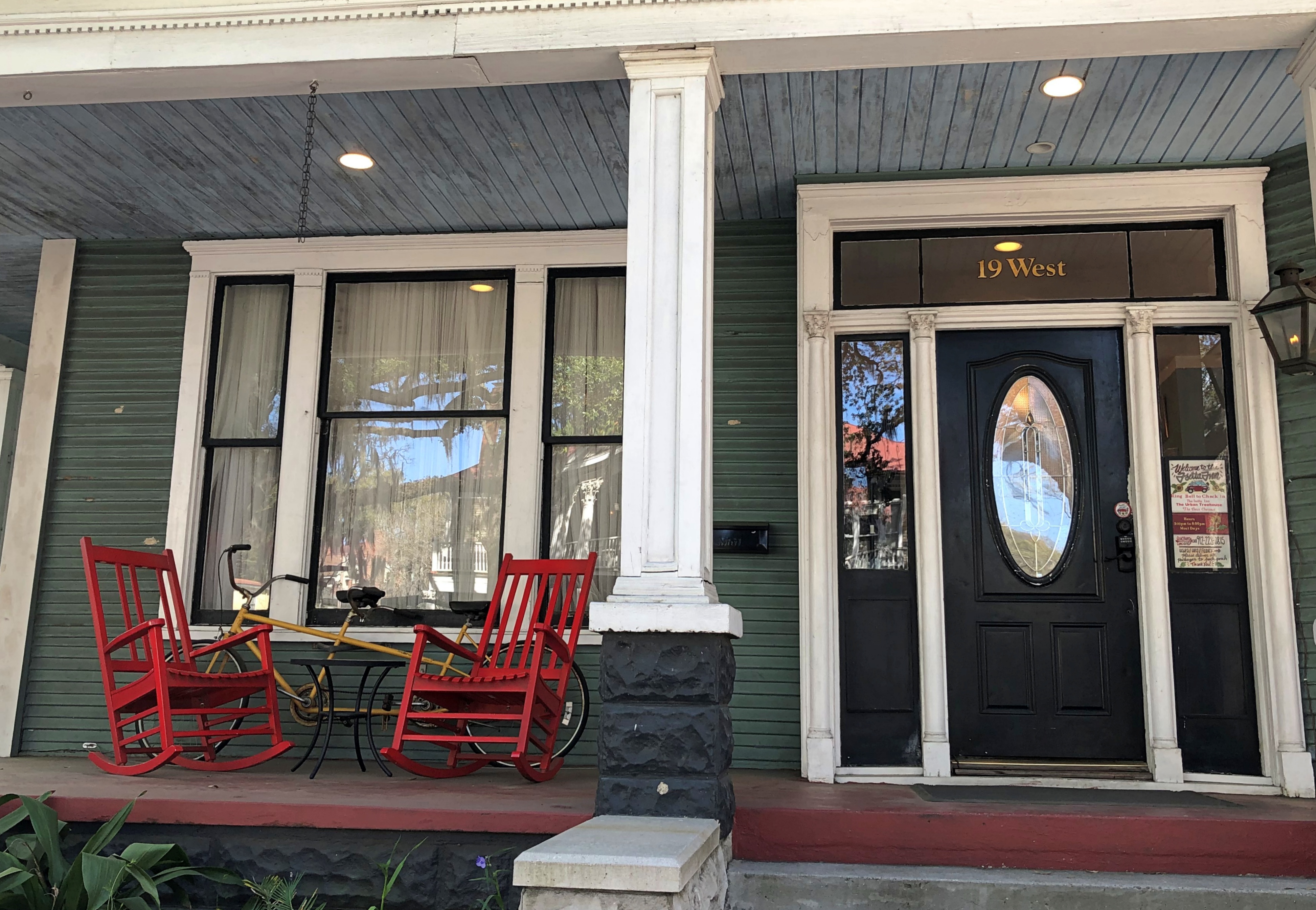
“Starland” doesn’t sound like an historic name, and it isn’t. Two Savannah College of Art and Design graduates reportedly dreamed up the moniker ca. 2000 to use for an arts district for the city.
“The idea of a vanguard arts district may seem counterintuitive in this slow-paced city of courtly manners and stately architecture, but after almost two decades, an emerging area called the Starland District may finally be hitting its stride,” the New York Times reported in 2015.
“… the Starland District is a collection of art studios, small offices, galleries, cafes and retail shops loosely assembled around Bull Street south of Savannah’s historic downtown and Forsyth Park.”
The lobby of the Isetta is an artful place — actually the whole property is — and so right at home in an arts district. In fact, the lobby displays local art on a rotating basis. The sliced off BMW trunk is the reception desk.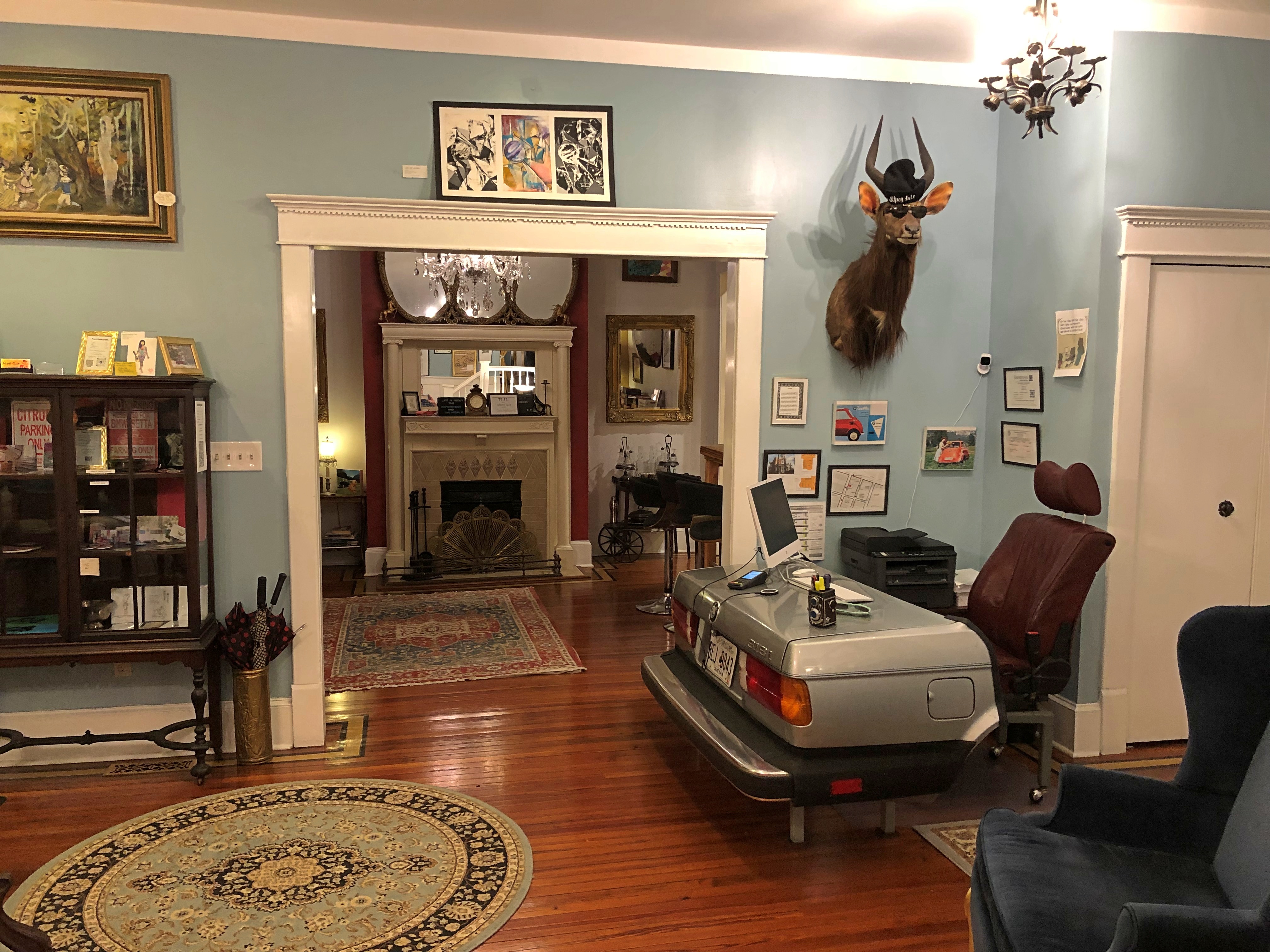

Adjacent to the lobby is an ornate but comfortable living room. I spent a while there as well, writing postcards. Wonder how often that happens.
The entrance to the right off the living room is to the kitchen, where guests could use a table, refrigerator, sink, plates and silverware, and a microwave, but not the stove or oven. We had cereal and other breakfast food — also available to guests — two of our mornings there, and leftovers for dinner one night.
A distinctive feature of the kitchen.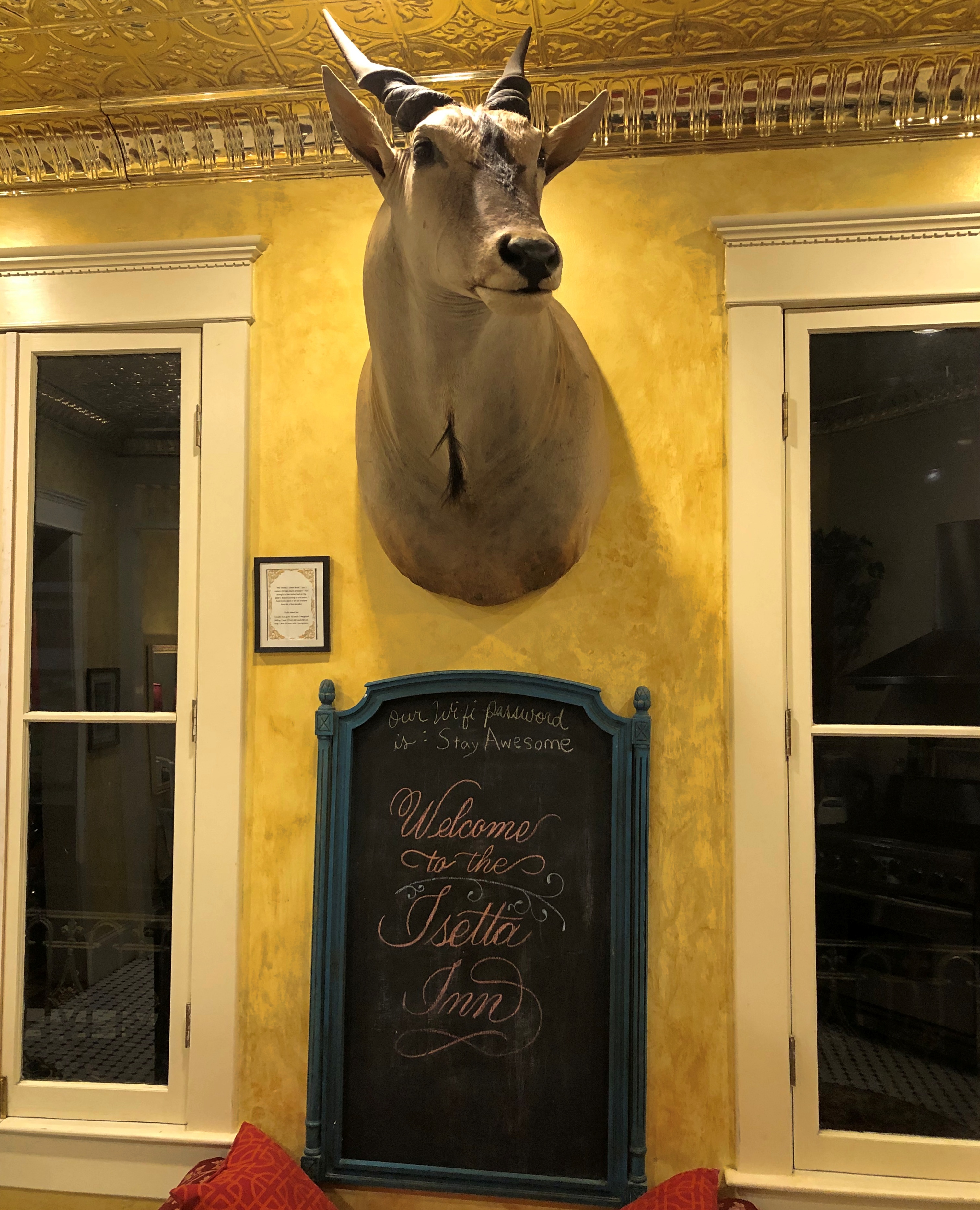
Our room, Hedwig’s Perch, was on the third floor. All of the hotel’s rooms have names, also including Sacred Tower, L-Suite, Polaroid Room, Alpha Romeo, and the posh Presidential. Just before we left, we noticed that the guests in that room had left before us, leaving the door open, so we got a peak inside. Posh indeed.
As for Hedwig’s Perch, it might have been a children’s bedroom originally, or maybe a sewing room, cozy as it was. But it did have two single beds, the only room at the inn with that feature, so I booked it. Two other rooms are on the third floor, and the three share one bathroom with a shower, and one without, off a short hallway. This was never an issue.
Our room was L shaped. Open the door and you see a bed with a cast-iron frame, a rolltop desk and a tree painted on the wall, complete with Spanish moss. Ann had to tell me who Hedwig was: Harry Potter’s owl.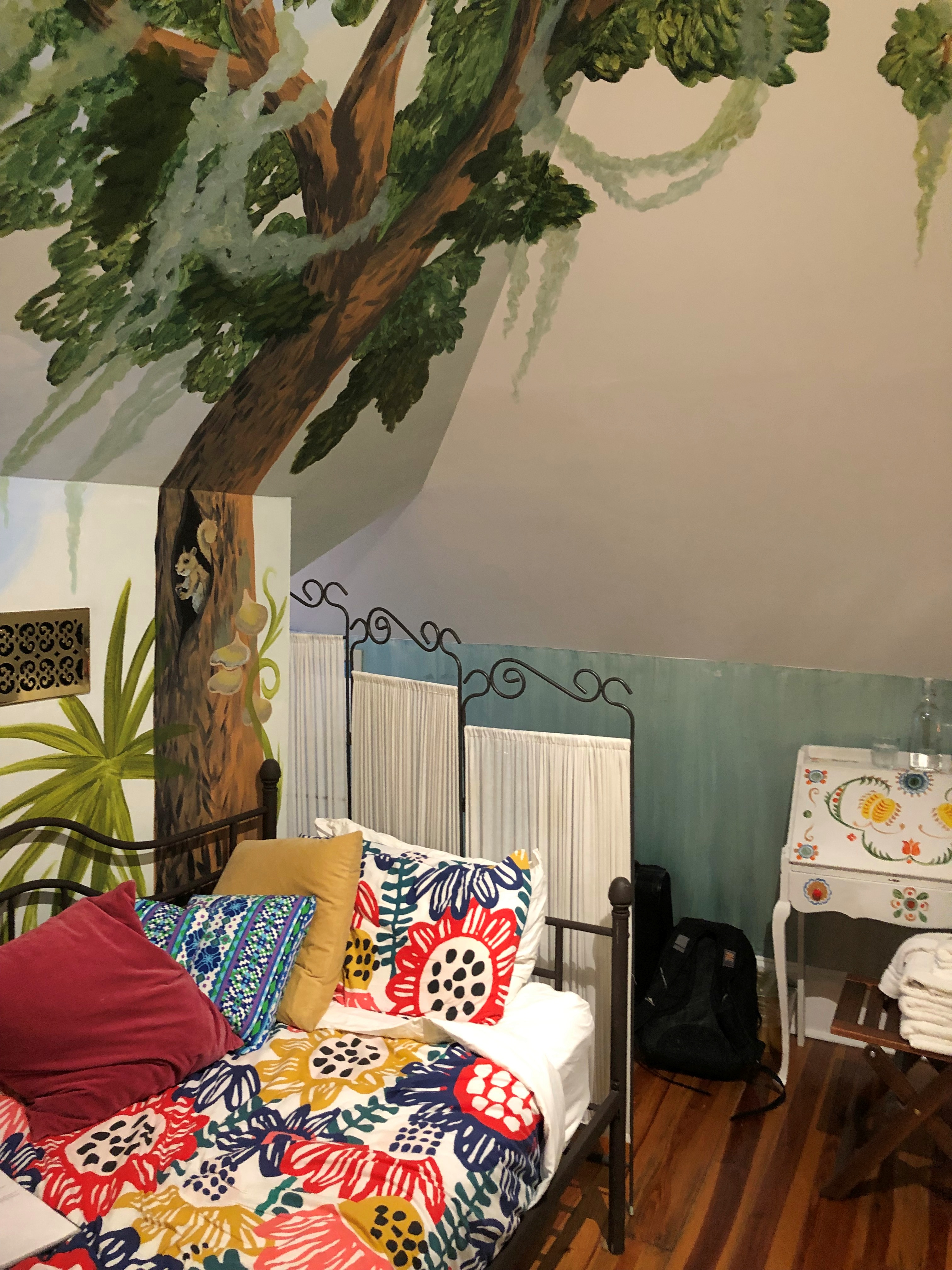
The walls, according to the inn, were “custom painted by famed artist Dame Darcy.” I had to look her up, but the world is full of things I don’t know. Could be I’m not in the right demographic, since she’s known for illustrating works like Vegan Love: Dating and Partnering for the Cruelty-Free Gal, with Fashion, Makeup & Wedding Tips and for Tarot decks that went viral.
Then again, demographics are limiting. After all, some young men were reportedly fond of My Little Pony, so there’s no real reason late middle age/early old age men can’t enjoy, for example, Dame Darcy’s autobiographical graphic novel, Hi Jax & Hi Jinx (Life’s a Pitch and Then You Live Forever). But odds are I won’t read it.
Dame Darcy’s arboreal theme continues along the rest of the wall. I slept in the cast-iron bed, under the 2-D tree canopy. The bed squeaked at a low pitch, even when I wasn’t moving, that would have kept me awake for hours had I not figured out to keep the bed absolutely flush with the wall.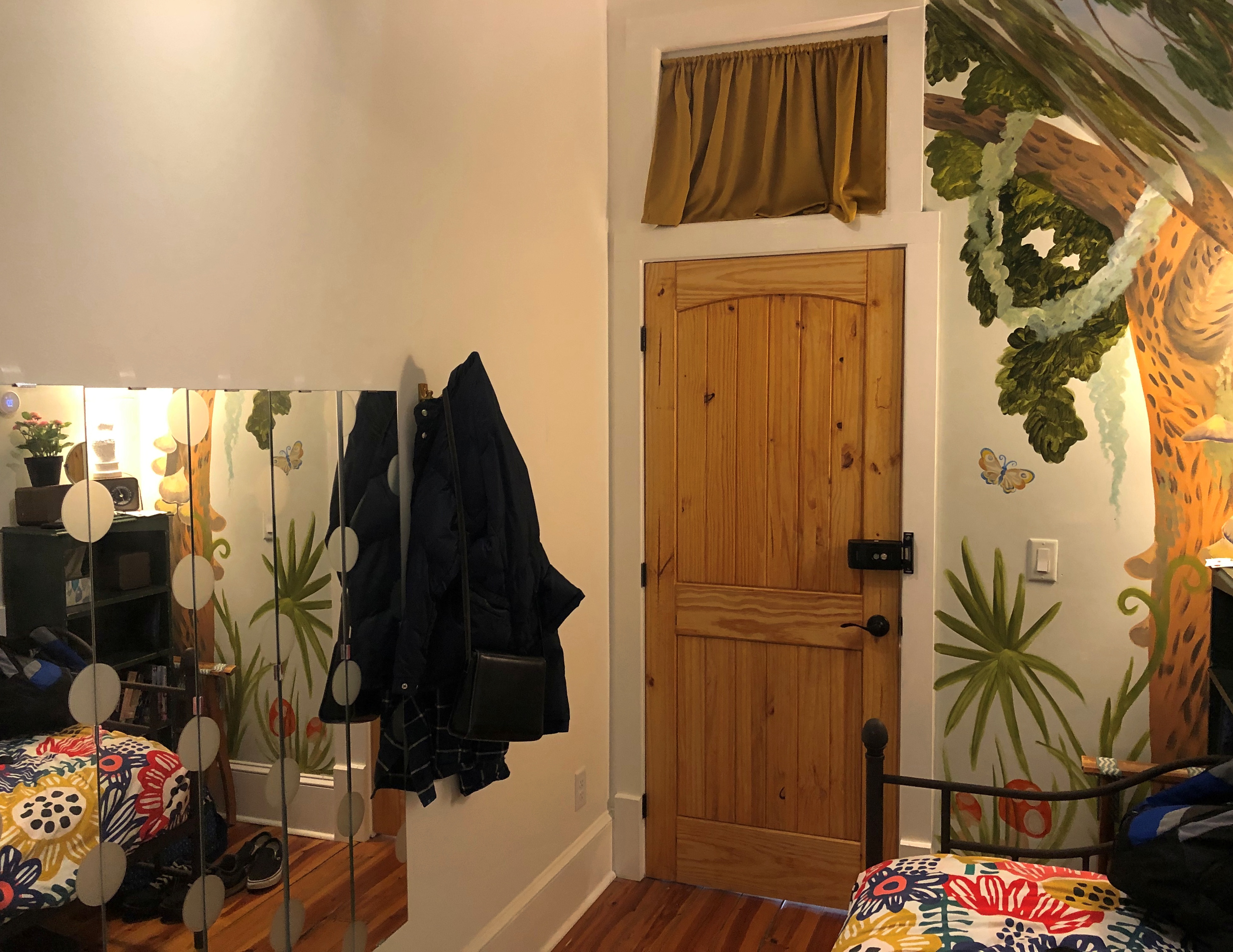
Around the corner of the L is another bed, or a reading nook, which is where Ann slept.
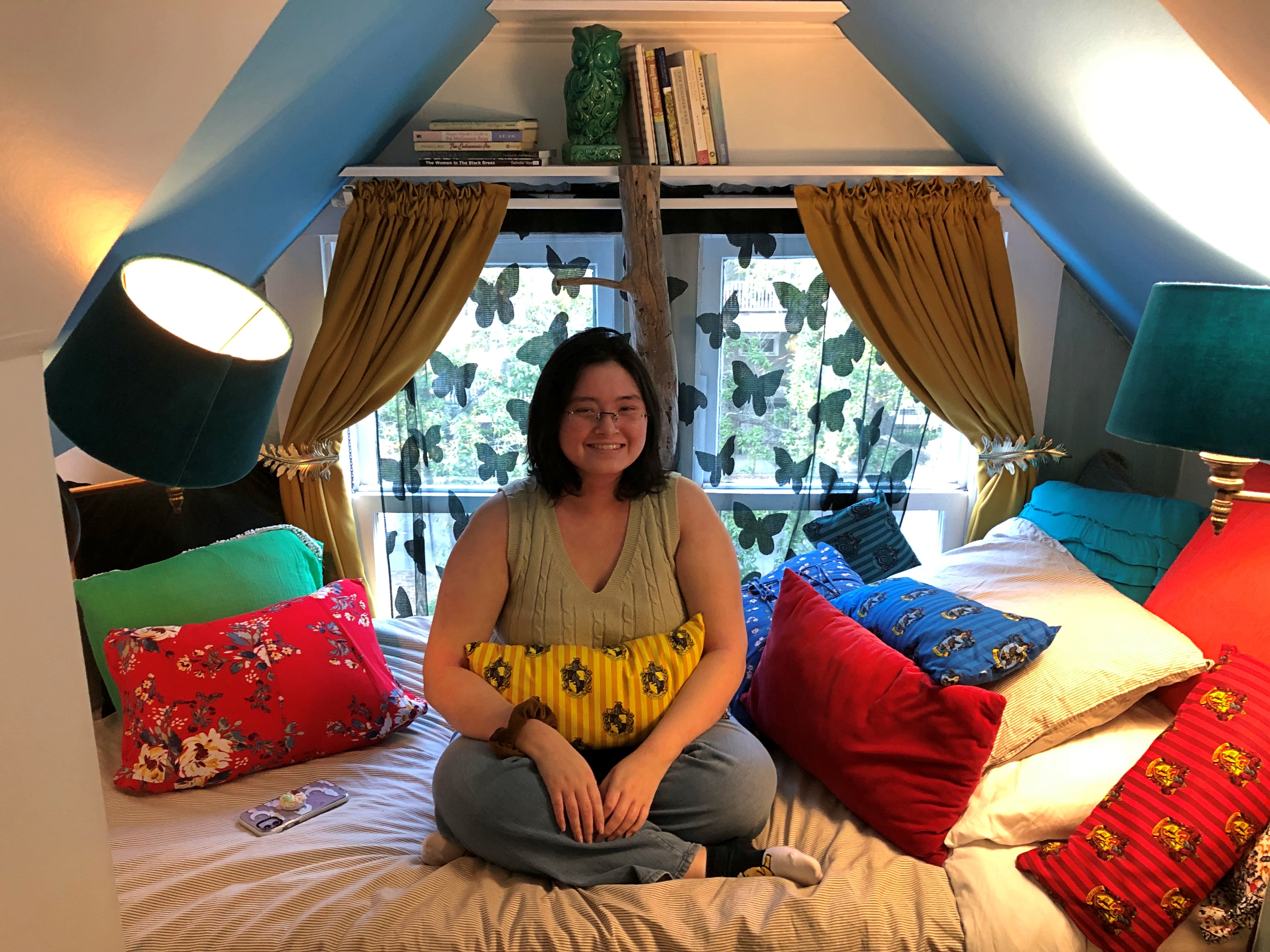
For all its high-polish artistic charms, I’m glad to say Isetta wasn’t vastly expensive. I’ve paid about as much for soulless middle- and upper-middle chain hotel rooms, and somehow staying in a soulless room in a city like Savannah would have been a damned shame. I haven’t worked out exactly why the Isetta was named for the bubble car of that name, but the web site does say the following, attributed to owner Jonathan.
“I’m big believer in alternative transportation to improve quality of life for us. We have a fleet of rental bicycles available to all guests. We are perfectly located for you to see all the sites on two wheels. I also personally have a few examples of historical ‘alternative transportation’ ideas in the form of micro cars. Such as a 1950s BMW Isetta that is our namesake.”
That’s pretty cool, but I’ll bet the bubblecar that’s for hard-core enthusiasts is the Soviet SMZ cyclecar.